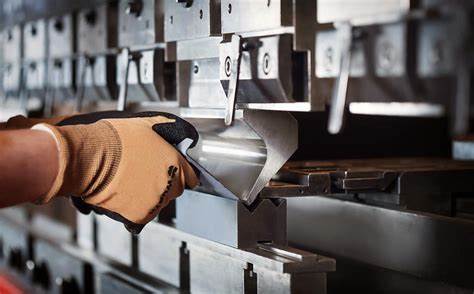In-Depth Exploration: The Unique Aspects and Application Domains of Sheet Metal Fabrication and CNC Machining+ View more
In-Depth Exploration: The Unique Aspects and Application Domains of Sheet Metal Fabrication and CNC Machining
+ View more
Date:2024-03-19 16:00
In the manufacturing industry, sheet metal fabrication and CNC (Computer Numerical Control) machining are two commonly used yet distinctively advantageous techniques. Understanding their key features and suitable application domains is crucial for product design, cost control, and production efficiency. This article delves into an analysis of these two methods and provides a real-case scenario to illustrate how to make the right choice in different applications.
The Specialty and Application Scenarios of Sheet Metal Fabrication
Sheet metal fabrication involves various processes of metal sheet deformation, including cutting, bending, punching, etc. This technology is recognized for its high efficiency, low cost, and flexibility, meeting the needs of large-scale manufacturing. Additionally, sheet metal fabrication allows for the rapid creation of lightweight structures with complex curves, commonly employed in automotive, home appliances, and construction industries.
Parameter Basis:
- Material thickness range: Typically from 0.5mm to 20mm.
- Typical tolerance: ±0.2mm, with higher precision achievable with special processes.
- Processing speed: Laser cutting can exceed speeds of 10 meters per minute; bending machines have an operation cycle of about 5 to 10 seconds per part.
The Distinctiveness and Range of Applications for CNC Machining
CNC machining executes precise cutting, milling, drilling, etc., via preprogrammed software-controlled machine tools and is particularly suited for parts requiring extreme accuracy and complex three-dimensional shapes. CNC machining is extensively applied in high-tech fields such as aerospace, medical devices, and precision instruments.
Parameter Basis:
- Precision range: Can achieve up to ±0.005mm or higher.
- Types of materials processed: Metals (including hard alloys), plastics, wood, etc.
- Equipment types: From 3-axis to multi-axis CNC machines to meet different levels of design complexity.
Practical Case: Manufacturing Modern Aircraft Parts
A quintessential example is the manufacture of modern aircraft parts. For critical components like engine covers, wing structures, and internal braces, aviation companies require materials that are strong yet lightweight. These parts must withstand high pressures and temperature variations, demanding utmost precision and quality assurance.
Sheet metal fabrication shows its advantages in the production of thinner structures and brackets that need to be mass-produced. With advanced laser cutting and precision bending technologies, parts that meet specifications can be produced quickly and at a lower cost.
Conversely, for parts like engine covers that require high-temperature-resistant alloys and complex geometrical structures, CNC machining is turned to. Using 5-axis CNC machines, high-precision machining of intricate shapes can be achieved, meeting the rigorous standards of the aviation industry.
Conclusion
Sheet metal fabrication and CNC machining each hold their ground within the manufacturing domain, fulfilling product design requirements through different technological avenues. Sheet metal fabrication is suitable for products needing fast production, lower costs, and relatively simple shapes in large quantities. CNC machining, on the other hand, is more appropriate for small batches or customized products requiring high precision, complex shapes, or the use of difficult-to-machine materials. Understanding the characteristics of these two methods and selecting based on the specific requirements of the project will aid in maximizing the value and performance of the product.
Share to:
Recommend wonderful blog posts

